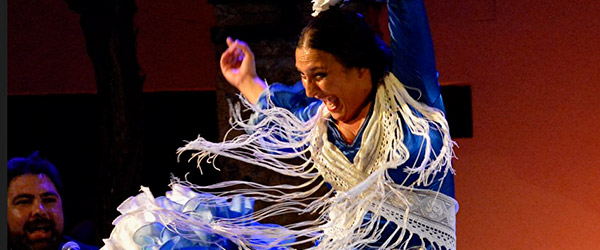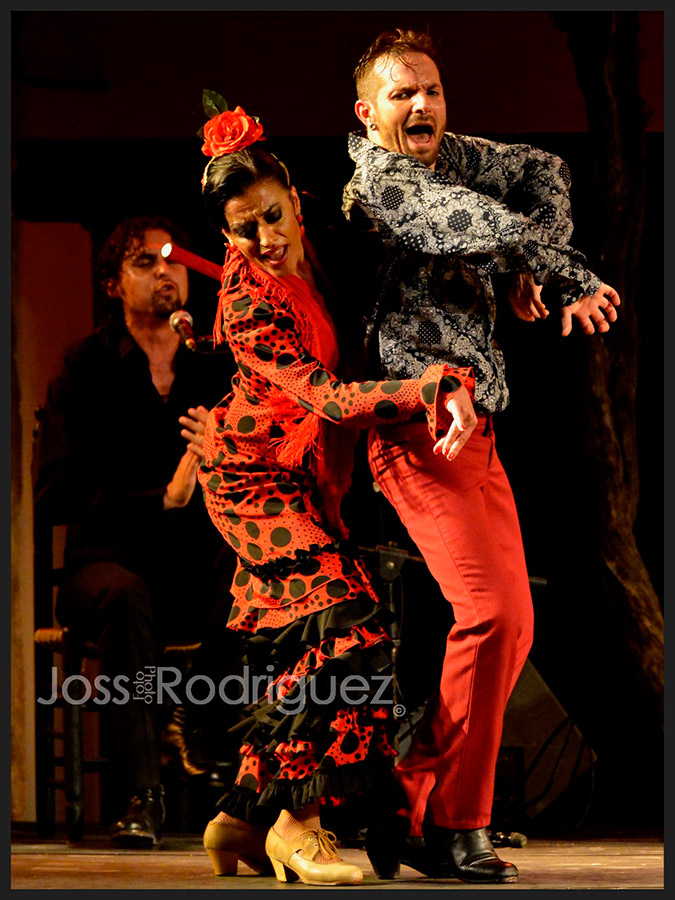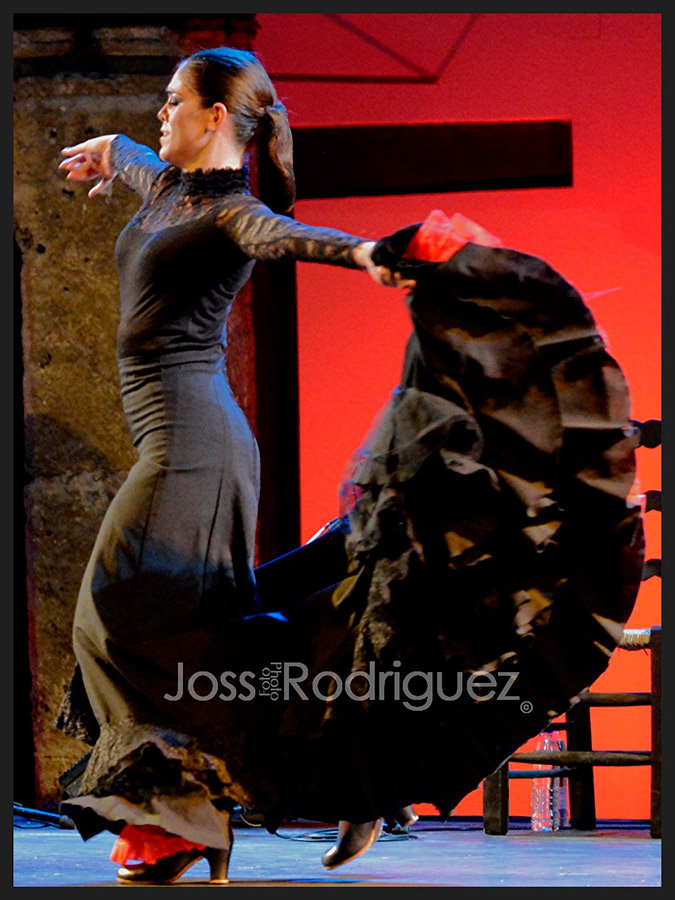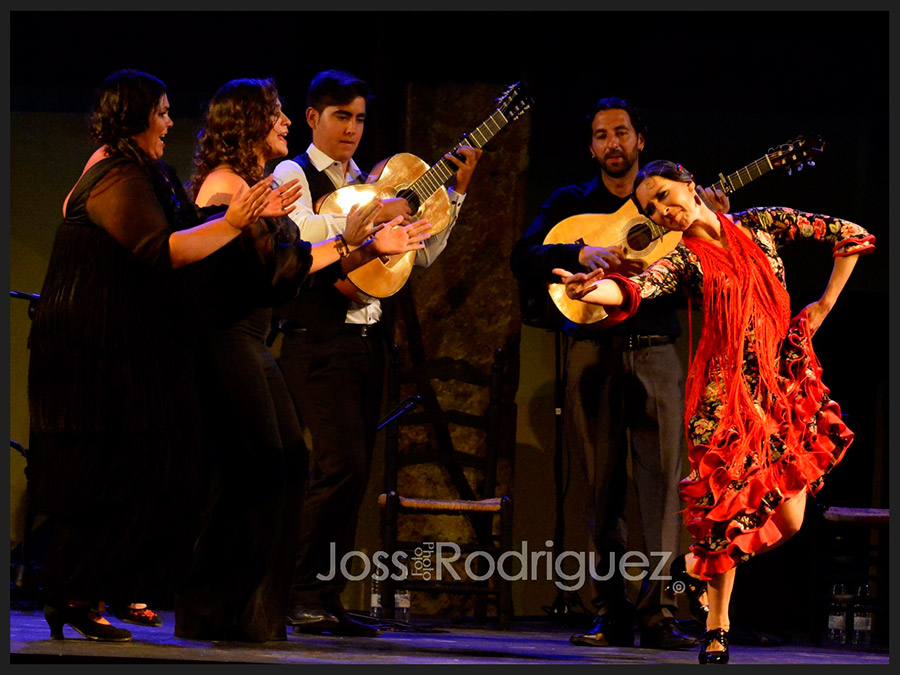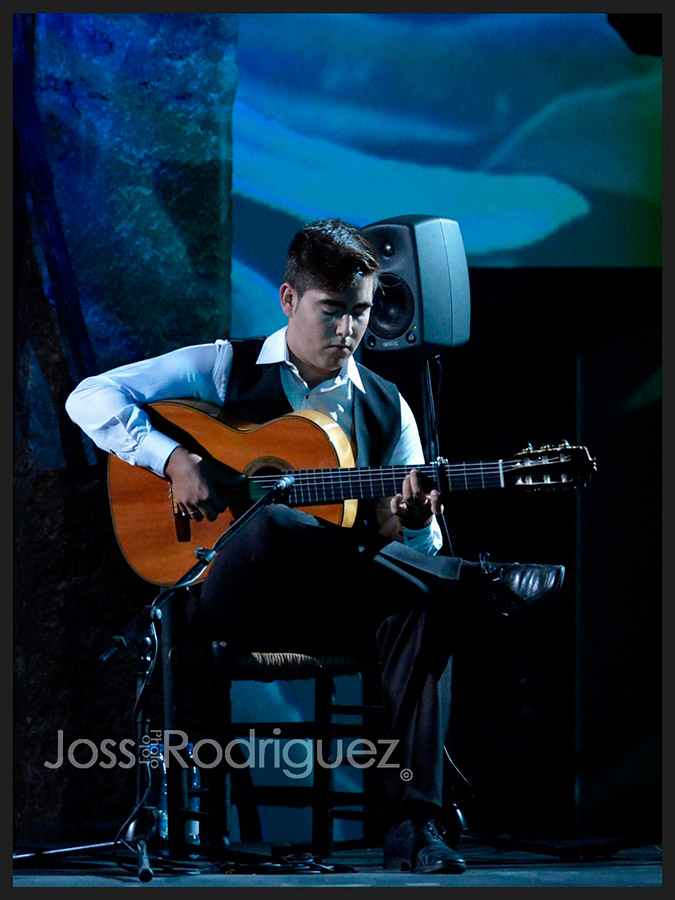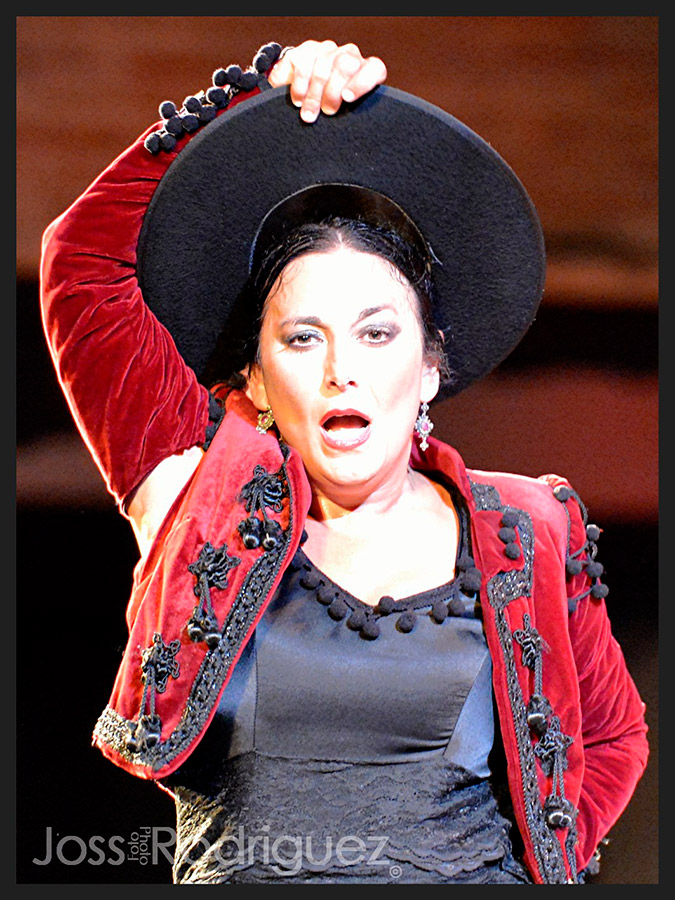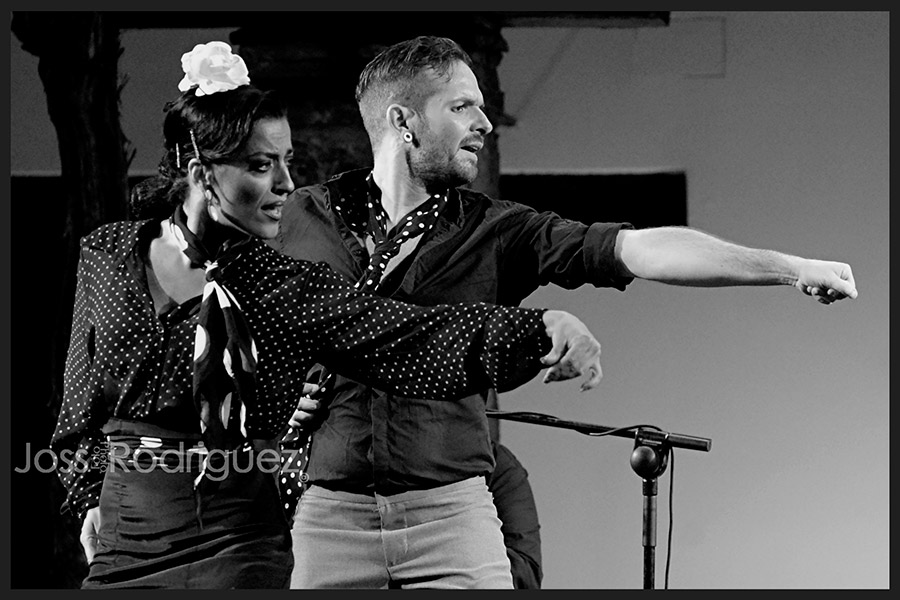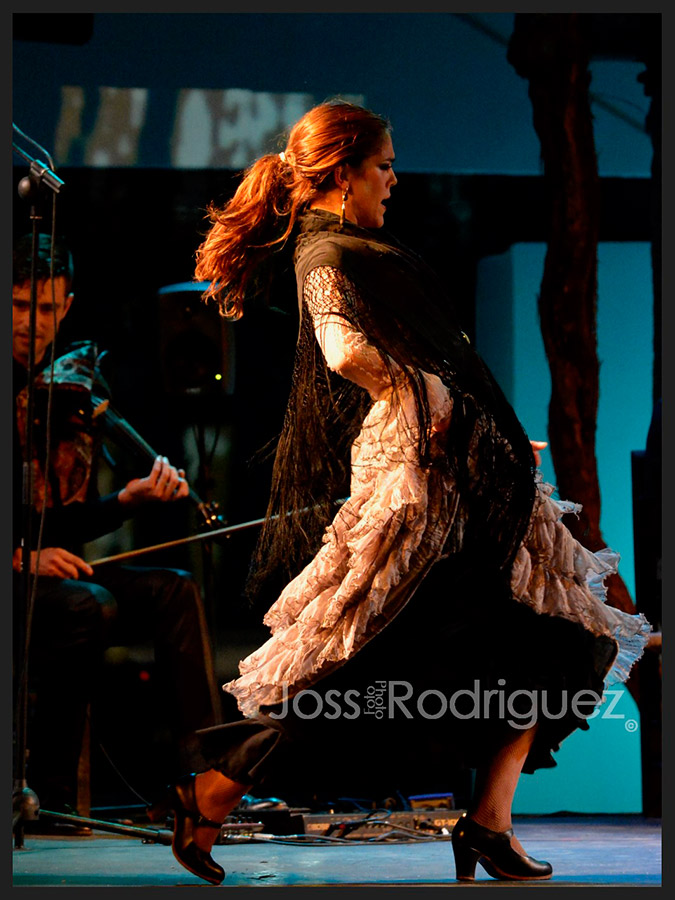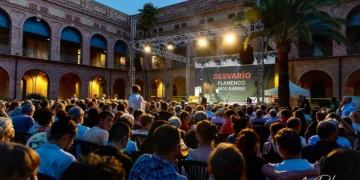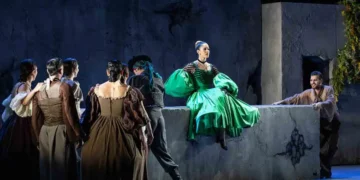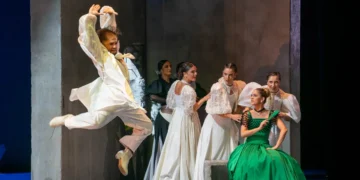Text: Jorge Fernández Bustos Photos: Joss Rodríguez
Carbones granadinos
Program
Monday: La Lupi dance; Antonio Campos and Antonio Núñez ‘el Pulga’ (vocal); Curro de María (guitar); Nelson Doblas (violin); David Galiano (percussion).
Tuesday: Anabel Moreno and Jesús Fernández dance; Trini de la Isla, El Mati and Alfredo Tejada (vocal); Jesuli del Puerto (guitar).
Wednesday: Patricia Guerrero dance; José Ángel Carmona (vocal); Paco Iglesias guitar; Bruno Axel (violin); Agustín Diassera (percussion).
Thursday: Gala flamenca de Granada. Marta ‘la Niña’ and Alicia Morales (vocal); Álvaro ‘el Martinete’ and Antonio de la luz (guitar); Rocío Montoya (dance).
Venue: Corral del Carbón. Attendance: Full daily. Date: August 4 – 7, 2014.
Years ago around these parts people used to say that without a doubt, Granada had the most promising crop of new flamenco artists in its history, and possibly the best in all Andalucía. Today that prediction has come to fruition, at least a dozen Granada artists are featured on the most important programs of this genre, and another generous dozen are coming on strong.
We've been watching them for a long time. Following their evolution, step by step, sometimes giant strides. We know their successes within and outside our borders.
Except for the fist day with La Lupi, from Málaga but with ties to Granada, all the interpreters were from Granada, and each one set the Corral del Carbón alight in his or her own way.
The artistic maturity of Susana Lupiánez is undeniable. Lupi is a self-taught dancer from Málaga who has found her true calling, she's been performing for years and, although she was in the background for a long time, now she is finally «coming out» (in quote marks, because those of us who have been following her have always recognized her talent). It's possible her recent collaborations with Miguel Poveda are what have given her name that needed extra sheen.
At the Corral she presented Retorno, a tribute to those dancers of the past who, like herself, learned from no one, just from what they saw and what they experienced.
Full of good-natured humor, she did a virtual tour of how each area of Andalucía interprets flamenco dance, exaggerating the forms and cliches, with a grotesque wink for each region. After a while, the parody became tiresome.
A smile is on the dancer's lips at all times; her footwork and 'desplantes' are doubly worthwhile, in defense of traditional dance as well as its comic extension. Although, as stated, the excessive clowning took away from the whole. Her vision is focused on that past and the future, on what is important and what is superfluous.
Antonio Campos and Antonio Núñez «el Pulga», two usually fine back¬-up singers, were not up to par; Curro de María on guitar is the heart and soul along with the dancer; David Galiano, respectful on cajón; and Nelson Doblas was memorable on the violin.
La Lupi is wild, full of life and provocative in the tangos del Camino. The same goes for the alegrías de Cádiz, and the caña when she represents Córdoba dressed in black, with a torero jacket and Cordoban hat. Also noteworthy is a vocal arrangement that makes interesting use of overlapping voices.
The show ends with malagueña including the use of a shawl, while Antonio Núñez interprets a zambra in the style of Caracol.
Anabel Moreno left Granada for Madrid years ago and, although she has occasionally returned, until last Tuesday she hadn't come to the Corral with a show of her own, accompanied by Cádiz dancer Jesús Fernández. Her self-confidence, artistic identity and maturity are clear. Without a doubt she was the big surprise of the series.
She began her performance with siguiriyas, an original and lively pas de deux where the voices of the three singers, Trini de la Isla, El Mati and Alfredo Tejada, along with their palmas and cheering, made the percussion unneccessary. They make up a good group, but at times the excess of shouting deforms the result. The second joint choreography was tangos de Granada, beginning and ending with Bambino's hit song «No me des Guerra». It's a new kind of duet in which the versatile cane is a pretext that softens the coldness of the beginning. The desire to please is authentic and well-rewarded.
Jesús Fernández, in his long bulería por soleá, made use of his great sense of rhythm and powerful technique, but it is in the silences when this dancer shows his true worth.
Anabel Moreno rounded out the show with a fine soleá in which her Sacromonte roots were clear «Touché», Patricia Guerrero's show debuted on Wednesday, an avant-garde piece of work in which the electric violin of Bruno Axel takes on special sinuous importance that parallels that of the dancer, although it was overdone at times.
Patricia's seamless dancing, without a doubt the best of the week, began with siguiriyas in which she showed subtlety and maturity. She was accompanied by singer José Ángel Carmona, Paco Iglesias on guitar and Agustin Diassera on percussion. The soleá was apolá, very close to Cobitos' version, with a considerable moviola effect at the end.
The surprise came in the form of classical music. With a conventional violin, Axel interpreted the second movement of Bach's Chaconne, while a romance por tonás overlaid the flamenco feeling.
The night ended with tangos in which Bruno plugged in again, incorporating a loop, the technique of recording oneself on the spot and playing along to yourself. The dancer, with a Hellenic red dress, used known steps and some of her own creation, for a high-quality choreography.
By what we've seen so far, Patricia's name will figure prominently in the history of flamenco.
On Thursday, the last program of the week, brought five young flamenco artists who came on strong. Singers Marta «la Niña» and Alicia Morales have fine-tempered voices, rich in shading and backed up by the singers' knowledge. Individually they were fine, but singing together it didn't quite work.
Alicia, accompanied on guitar by Álvaro «el Martinete», did granaína and abandolaos, followed by siguiriyas. Marta, more classic, with a sharper stronger voice, sang milonga and caña in which she recalled Morente. She was accompanied by Antonio de la Luz.
Rocío Montoya, natural and full of easy grace, provided the dancing. Settled in North America and belonging to the company Heartbeat of Home, she is a creative and efficient dancer. Her offering of mining cante and tangos was an example of art for art's sake, where she clearly was enjoying herself. Her performance was wrapped up with a brief bulerías.
Descubre más desde Revista DeFlamenco.com
Suscríbete y recibe las últimas entradas en tu correo electrónico.


